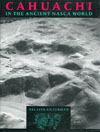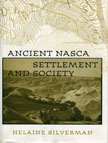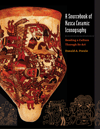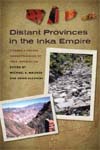Cahuachi in the Ancient Nasca World
"…an invaluable reference work…an important contribution to Peruvian archaeology."—Donald A. Proulx
"…the definitive treatment of Cahuachi…a basic reference for all scholars interested in South American prehistory."—Richard L. Burger
"…provides a masterful overview of ancient Nasca society as seen from its fascinating ritual center of Cahuachi where the author explored temples, tombs, and trophy heads to understand bygone people who produced among the most vibrant Precolumbian arts of the Andes."—Michael Moseley
"…a splendid example of archaeological reporting."—Gordon R. Willey
"By studying Cahuachi in its broader context Silverman is able to put forward a new, and convincing, model of Nasca social and political organization…an excellent introduction to Nasca culture as a whole."—Warwick Bray
Ever since its scientific discovery, the great Nasca site of Cahuachi on the south coast of the Central Andes has captured the attention of archaeologists, art historians, and the general public. Until Helaine Silverman's fieldwork, however, ancient Nasca culture was seen as an archaeological construct devoid of societal context. Silverman's long-term, multistage research as published in this volume reconstructs Nasca society and contextualizes the traces of this brilliant civilization (ca. 200 B.C.-A.D. 600).
Silverman shows that Cahuachi was much larger and more complex than portrayed in the current literature but that, surprisingly, it was not a densely populated city. Rather, Cahuachi was a grand ceremonial center whose population, size, density, and composition changed to accommodate a ritual and political calendar. Silverman meticulously presents and interprets an abundance of current data on the physical complexities, burials, and artifacts of this prominent site; in addition, she synthesizes the history of previous fieldwork at Cahuachi and introduces a corrected map and a new chronological chart for the Rio Grande de Nazca drainage system.
On the basis of empirical field data, ethnographic analogy, and settlement pattern analysis, Silverman constructs an Andean model of Nasca culture that is crucial to understanding the development of complex society in the Central Andes. Written in a clear and concise style and generously illustrated, this first synthesis of the published data about the ancient Nasca world will appeal to all archaeologists, art historians, urban anthropologists, and historians of ancient civilizations.
1. The Physical Setting
2. A History of Fieldwork in the Nazca Region
3. Nasca Chronology
4. Strong's Fieldwork at Cahuachi: Chronology and Culture
5. Surface Survey of Cahuachi
6. Architecture and Spatial Organization at Cahuachi
7. Looters and Looting
8. Excavation Strategy and Methodology
9. Excavations in an Open Area
10. Excavation at Unit F
11. Test Pits
12. Excavation of Mound Architecture
13. Excavation of the Room of the Posts
14. Burials at Cahuachi
15. Trophy Heads at Cahuachi
16. Nasca Pottery at Cahuachi
17. Other Ceramic Artifacts
18. Textile Artifacts
19. Artifacts in Other Media
20. Botanical Remains
21. Malacological analysis by Maria del Carmen Rodriguez de Sandweiss
22.The Identification of Cahuachi as a Ceremonial Center
23. The Significance and Broader Context of Cahuachi






